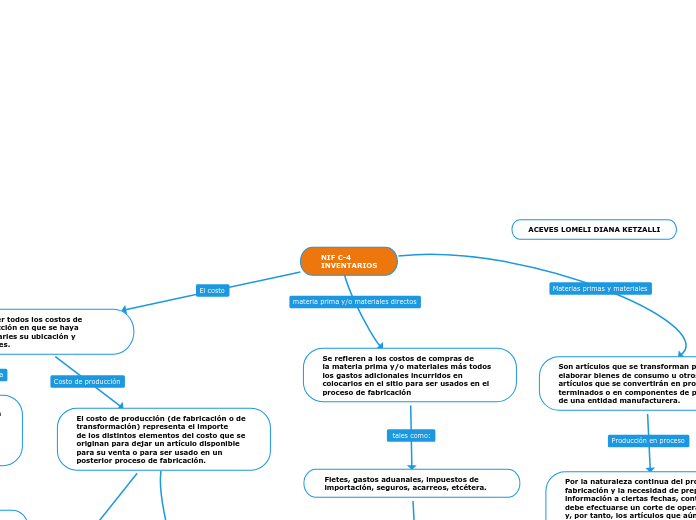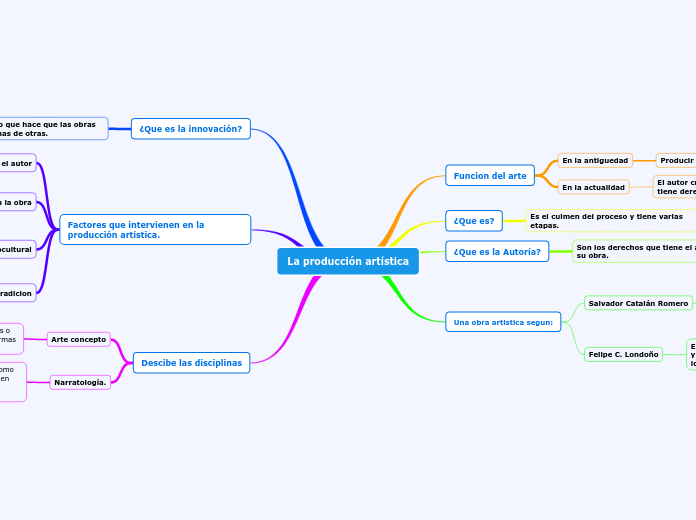COSTOS DE VENTAS DE BIENES Y SERVICIOS
To name your story, you have to think about the overall message and what you want your audience to understand from the story. Also, make it relevant and easy to remember.
MODELOS DE UN ESTADO DE COSTOS DE PRODUCCIÓN Y VENTAS
Se presenta para efectos didácticos. Hay que averiguar cada uno de los elementos del costo.
ESTADO DE COSTOS DE PRODUCTOS FABRICADOS Y VENDIDOS
Para este estado solo se tendrán en cuenta los materiales directos, mano de obra directa y los costos que se han empleado.
GASTOS DEL PERIODO
The ending of a story is essential. We all know that if the ending is weak, what happened before loses its importance. So make it unpredictable, but fair. A resolved ending answers all the questions and ties up any loose threads from the plot.
Los gastos administrativos, fletes, gastos de publicidad, donaciones, entre otros
This is the closure section of the story.
See examples of possible outcomes below:
- all problems have been solved
- it's clear how each one of your characters ends up
- your main character is transformed by the challenge
Los gastos del periodo irán registrados en el estado de resultados para dar el verdadero valor de ganancias en un periodo determinado.
Try answering these questions in order for you to come up with a closure:
- Have all problems been solved?
- Is it clear what happens with all your characters in the story?
- Has the challenged transformed your main character?
- How do the characters feel in the end?
COSTEOS POR ABSORCIÓN Y COSTEO DIRECTO
Costeo directo o variables
El costo de cada producto se basa en los costos de la materia prima, la mano de obra variable y los costos indirectos de fabricación variables.
Costeo por absorción o costos totales
El costo del articulo se basa en los costos de la materia prima, la mano de obra directa y los costos indirectos de fabricación fijos y variables.
SISTEMAS DE COSTEO
The middle of the story is where you add layers of complications that will lead to the end. Reveal more about the character's journey. Did their personality go through changes? How did they overcome the challenges? And as you build up the story’s central conflict, make it more personal to that character. Also, from the middle act, you have to lead into the final act.
COSTEO POR PROCESOS
Se justifica en empresas donde la producción es continua.
Empresas textiles, las fabricas de vidrios, etc.
COSTEO POR ORDENES DE PRODUCCIÓN
Each story has a main character and that character usually needs to solve a problem or challenge. The character's challenge is the one that creates tension throughout the story.
La producción se basa en pedidos o lotes de trabajo. En cualquier momento se puede identificar específicamente una parte del producto que se esta elaborando
Fabricas de zapatos, de muebles, etc
CLASIFICACIÓN DE COSTOS
Por el tiempo de su determinación
Anuales
Semestrales
Trimestrales
Mensuales
Semanales
Diarios
Por su inclusión en el inventario
De costeo variable o directo
De costeo total o de absorción
Según su identificación con el producto
Costos indirectos
Costos directos
Según los aspectos económicos involucrados en las decisiones de índole administrativo
Entre otros
Costos de oportunidad
Costos pertinentes
Costos incurridos
Costos futuros o diferenciales
De acuerdo con su variabilidad o comportamiento en el volumen de producción.
Semifijo o semivariables
Tienen elementos fijos y variables
Variables
Varían proporcionalmente con el volumen de producción.
Fijos
Permanecen constantes
De acuerdo con la forma en que se expresan los datos (método de calculo).
Costos predeterminados
Costos reales o históricos
Según la naturaleza de las operaciones de producción.
Mixtos
Costos por procesos de producción
De transferencia
De transformación o conversión
Costos por ordenes de producción
Costos por montaje
Costos por clases de producción
Por ordenes especificas o lotes
De acuerdo con la clase de organización o función del negocio.
Costos de administración o costos operativos
Costos de mercadeo o costos de distribución y de eventos
Costos de producción o de fabricación
FLUJO DE COSTOS
Costos incurridos en la elaboración de un producto.
Cuentas empresas manufactureras
Productos terminados
Productos de proceso
Subtopic
Suministro de fabrica
Materiales directos
ELEMENTOS
In the beginning of the story (or the exposition), you will need to introduce the setting and characters. You might also want to introduce the main conflict. This part of the story is important because it gives the reader necessary background information and maybe even a first insight into a character’s personality.
Costos indirectos de fabricación
The setting (time & place) of a story can change throughout the plot.
No son materiales directos ni mano de obra directa.
Your story can take place wherever your imagination will take you to.
For example: in an elevator, in an enchanted forest, etc. Don't forget to give details of the environment each time the setting changes, otherwise, the story can be confusing. Also, mention the seasons as each of them has unique weather and events.
Tercer elemento del costo.
Salario de los supervisores, del personal administrativo, horas extras, etc.
Costos de la mano de obra directa
Pago que se puede asignar de formar directa al producto.
Segundo elemento del costo.
Salarios de los trabajadores que intervienen de forma directa en la elaboración del producto.
Costos del material directo
Characters are essential to a good story. Usually, the protagonist(s) is/are the most affected by the plot. Introduce a character by focusing on their actions, interests, and occupation, as the physical appearance doesn't make a difference in most cases.
Materia prima
The weather is an important element in your story because it can highly influence the ambiance and the mood of the characters.
Primer elemento de costo.
Interviene directamente en le elaboración de un producto. Ejemplo: el cuero y la suela en la fabricación de zapatos.










